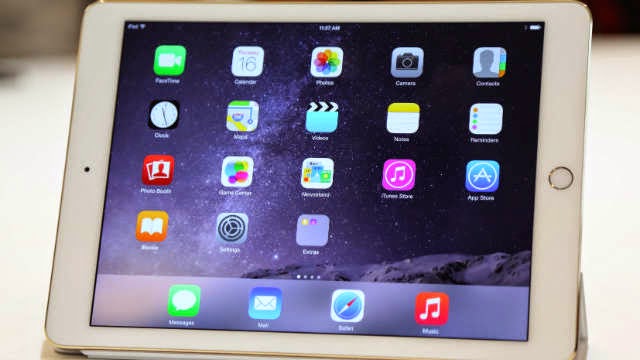Apple’s newest tablets: the iPad Air 2 and iPad mini are out and the Cupertino giant has a lot riding on them. For starters, it’s no secret that Apple’s iPad sales have been declining. As we had noted in this earlier post, while iPhone and even Mac sales have been doing fine, the iPad is another story.
To put some numbers into perspective: Apple sold close to 13.2 million iPads in Q2 of 2014, which is less than the 16.3 million sold in Q2 of 2014, and less than the 14.6 million iPads sold in Q3 of 2013.
According to Apple’s own data, the iPad is seeing a negative growth of 9 percent on units and negative growth of 8 percent on revenue, year-on-year. While the iPhone numbers haven’t dropped too drastically, the iPad is proving to be cause of worry for Apple.
At the last investor call, Apple CEO Tim Cook had tried to defend the numbers saying, “iPad sales met our expectations, but we realise they didn’t meet many of yours.”
Cook also cited IDC figures showing that iPad penetration among businesses stood at about 20 percent, versus 60 percent for notebook computers. He also indicated that iPad sales were actually up substantially in the Middle East, China and India and that India saw a 45 percent increase in iPad sales. But where US was concerned, even Cook conceded that the “market is weaker.”
But none of this takes away from the fact that the iPad market in particular and the tablet market in general has been shrinking. For starters, there are many reasons for the slowing growth of tablets, the most important being the rise of phablet smartphones. With smartphone screens as big as 7-inches, and 5-inches now being the norm, a lot of users might not really like the idea of carrying around another device that has a 10-inch screen.
The other reason is simple. Once you buy an iPads, there is no real reason to update. Unless you successfully managed to destroyed your iPad (which is pretty hard to do), a lot of users might hold onto their older iPads (even iPad 2) because very few things are likely to go wrong with the hardware. The problem with the iPad Air was that other than being extremely thin, and a new processor, it didn’t offer anything drastically new. With the iPad mini 2, all we got was a better screen.
So what of the iPad Air 2 and iPad mini 3? Are they the magical devices that will boost the iPad sales up? For starters, let’s look at the upgrades:
With the iPad Air we’re got some perceptible changes. It’s thinner, only 6.1mm thick, it’s coming in gold as well along with Space Grey and Silver, the rear camera is now 8 megapixels from the previous 5 megapixels and there’s a faster A8 chip along with M8 motion coprocessor. There’s also a barometer as well as of course the Touch ID fingerprint scanner as well. There’s also faster WiFi speeds and more LTE bands on the iPad Air 2.
With the iPad mini 3 other than the gold colour and Touch ID fingerprint scanner, nothing has changed in the device. It’s all pretty much the same — the old A7 processor, 5 megapixel camera and screen resolution.
Essentially there’s no ‘wow’ factor in the new iPad Air 2 unless you count the fact that it has a sharper camera and Touch ID. Apple hasn’t bumped up the screen resolution drastically, we don’t full know what the processor is capable of and the front camera is still 1.2 megapixels. Sure there’s anti-reflective coating on the screen, but seriously this isn’t something to die for.
It remains to be seen whether or not these iPads do well, and of course a lot of users who’ve been wanting to upgrade for the last couple of years, will probably line up to buy them, but the truth is that the new iPads are boring and underwhelming.
This is not to say that they won’t work well; they will. This is just to point out that a lot of new users who might be lining up to buy their first tablets would probably not consider the iPad Air 2 or iPad mini 3 as their first option. For instance the Samsung Galaxy Tab S (8.4), which was recently launched is a great alternative to the iPad mini and has a much sharper 2560×1600 resolution Super AMOLED screen, an 8 megapixel rear camera, along with a microSD slot with 128GB as the limit.
While the Galaxy Tab S might be an expensive option, there are other cheaper options available in the market as well which offer a decent screen resolution and specs. From Nexus to Lenovo to Asus, the choice of tablets users now have is immense.
The iPad Air 2 and iPad mini 3 are for the die-hard Apple fans. For a lot of new users, these might not even end up being the first option given their high price and the lack of specs like extra SD card slot or a better camera. And this won’t be great news for Apple.













